Workshop and Symposium Information for TRIZCON2020
Download The App To Get Started!
WORKSHOP - Overview
Master Class (workshop): Situation Management System (SMS) for the next COVID-XX
from Dr. Anatoly Agulyansky and Isak Bukhman
This workshop will be live from 8:00 AM until 11:30 AM. (EST)
Situation Management System in all countries of human civilization was not sufficient enough to prevent COVID-19 global (pandemic) and local deployment (epidemic). Some countries like Vietnam, Australia, Denmark, Norway, Canada, Finland, South Korea, Taiwan, Singapore were more successful on the battlefield with COVID-19. We have real heroes of this war New Zealand Prime Minister Jacinda Ardern and the mayor of Seoul Park Won-soon.
We plan to use the following elements of TRIZ Technology for Innovation for creating a model of a more effective Situation Management System for the next COVID-XX:
- Project Scenario
- Report on the initial situation by the project team, including any requested information
- Selection right project topic and right initial problem definitions
- Preparation clear and understandable pictures/sketches of the project system
- Creation a list of specification requirements and expectations
- Preparation a list of time-space-substance-field resources and its parameters
- Creation of a dream image of required system
- Creation an innovation roadmap for the project
- System function analysis
- Problem Selection for further solving
- Concepts creation using inventive and separation prinsiples for system and physical conradictions
- Concepts evaluation and selection
- Concept Scenario Creation
About the Speakers:
Dr. Anatoly Agulyansky
This email address is being protected from spambots. You need JavaScript enabled to view it.
Anatoly holds Ph.D. in Chemistry and collected long-term expertise working in the processing of materials for electronic applications and electronic components manufacturing.
His experience is in both academic research (Chemistry Institute of Russian Academy of Sciences, Bordeaux University and Israel Institute of Technology – Technion) and Electronic components manufacturing (Private consultancy, Vishay Intertechnology, and Intel Corporation).
Anatoly published more than 80 papers and a book.
He is currently holding a position of Sr. Staff Engineer in Intel Israel.
Isak Bukhman
This email address is being protected from spambots. You need JavaScript enabled to view it.
TRIZ Master, President and Consultant of TRIZ Solutions LLC (USA), President of Altshuller Institute for TRIZ Studies, innovation advisor of Tsinghua x-lab (School of Economics and Management, Tsinghua University), senior consultant of Chongqing Innovation Method Society, honorary director of Chinese National Engineering Research Center for Technological Innovation Methods and Tools, honorary member of Leibniz Institute of Interdisciplinary Studies (LIFIS)
As their chief methodologist, Isak spent almost ten years at Invention Machine Corporation (IMC-IHS) while the company established its global reputation. He now works as an independent consultant and is an owner of TRIZ Solutions, LLC.
TRIZ Solutions LLC is a consulting company that offers the complete array of TRIZ Technology for Innovation products and services to companies from any industry by using a system of training, project facilitation, consultant preparation, and support in the creation of Centers of Innovation. TRIZ Solutions LLC helps to realize the privilege and obligation each member of our society has to be a creative person and to live a successful and happy life.
During recent years, Isak has been active delivering TRIZ training workshops and guiding the development of more than 100 innovation projects for more than 40 leading global Corporations, Institutes, and Universities, including American Axle & Manufacturing (USA), BYD (P. R. of China), Bobcat (USA), Chery Automobile (P. R. of China), Delphi (USA), Eaton (USA), Hendrickson (USA), Ingersoll Rand (USA), Johnson Controls (USA), Alcon (USA), Biomerieux (USA), DePuyOrthopaedics (Germany), Medtronic (USA), Steris (USA), Baker Hughes (USA), Chemtura (USA), Masco-Behr (USA), Shell (USA, U.K.), Stress Engineering Services (USA), A.O. Smith (USA), BaoSteel (P. R. of China), Flowserve (USA), Hollingsworth (USA), Savannah River Site (USA), POSCO (South Korea), Xinetics (USA), DSO National Laboratories (Singapore), General Dynamics Land Systems (USA), Asus (Taiwan), Compal Electronics (Taiwan), Clorox (USA), Corning (USA), Epistar (Taiwan), GAF (USA), Henkel (Germany), Huawei Technologies (P. R. of China), Intel (USA, Israel), Johnson & Johnson (USA, Brazil), Matter/Fisher-Price (USA), Microsoft (USA), NXP (Hong Kong), Samsung Electro-mechanics (South Korea), Philip Morris (USA), Philips (Netherlands), Shenzhen Kaifa Technology (P. R. of China), Whirlpool (USA), Siemens (Germany), GEGR-E (Germany), Southwest Research Institute (USA), Chung Hua University (Taiwan), Lunghwa University of Science and Technology (Taiwan), Mitsubishi Research Institute (Japan), Singapore Polytechnic-school of Mechanical & Engineering (Singapore), Tulane University (New Orleans, USA), Leibnitz Institute for Interdisciplinary studies (Germany), Holon Institute of Technology (Israel), Universidad Technologica Nacional (Argentina), Tsinghua University (P. R. of China), Hebei University of Technology (P. R of China).
Isak’s work has also included the delivery of numerous essential and advanced training seminars (some together with Genrich Altshuller), education and training of thousands of managers, engineers, and researchers in TRIZ/Value Methodology, and – closest to his heart – seven years of child and adolescent creativity (TRIZ) education in his native Latvia. It was a long way from a team of 12-year-old students to a specialized TRIZ K11 elementary-middle-high school of Lomonosov name in Riga.
Abstracts for TRIZCON2020 Symposium
***Keynote Speaker ***
Artificial Intelligence assistance for TRIZ activities semi-automation
Denis Cavallucci, Head of CSIP Research Team at ICube (UMR-CNRS 7357)
It is undeniable that our industrial era is entering the digital age. Two successive waves are overwhelming industrial strategies: the digitization of the company with its 4.0 paradigm (robotization, sensors, intelligent piloting) and the rebirth of artificial intelligence that will soon make the difference between companies that will have learned to deal intelligently with it and those that will remain on the old model.
It is inconceivable that TRIZ will not take advantage of this digital momentum to transform itself. Already a few research organizations are trying to rebuild its tools, but the pace of this research needs to be stepped up if we are not to miss the world's digitization train. To what extent should we claim our place? Well, in that of digitization upstream of R&D, those phases where the ideation is imposed as a producer of breakthrough ideas and the synthesis of the informational states of the art to better steer and decide what to solve.
This keynote proposes a roadmap of the intelligent digitization of the inventive activity in two phases: formulation assistance and resolution assistance. Some open source algorithms from the world of Artificial Intelligence, enriched by what the TRIZ framework imposes as a way of synthesizing knowledge and aid ideation, will be explained and the first precursor tools of an artificial assistance of the use of TRIZ will be demonstrated live.
About the Speaker:
Denis Cavallucci is Professor in Engineering of Innovation at INSA Graduate School of Science and Technology of Strasbourg - France. He is the head of CSIP/DISIP research team (Design, Information Systems and Inventive Processes) at ICube (UMR CNRS 7357) at University of Strasbourg which investigates theories, methods, and tools for formalizing inventive activities within industrial organizations. Denis Cavallucci is co-founder and past president of the European TRIZ Association ETRIA. Among his current research goals is to integrate artificial intelligence into the early stages of design activities to systematize inventive processes within R&D context.
***Presenters***
The Innovation Pivot: Using strategy and the tactics of Systematic Innovation methods (TRIZ) to outcompete rivals in the marketplace
Richard Platt
Abstract
We are indeed in a profound change underway across the globe with the “Covid19 Pandemic Recession” impacting and affecting every single person and business on the planet. With that said, no company, Fortune 500 or not, is immune from its effect, and the losses are mounting as we speak. So, in such a situation, no one company gets through this current economic & business environment unscathed without innovating their way back to profitability and competitive advantage, and more than likely, they are going to have to do it with strategy leading the way. Do any of you see how it would be any different than that?
If all companies are really in the same boat, what is it that they are going to offer in their industry that gets their customers back uniquely? How do they get back to profitability and/or competitive advantage, so that those customers would want to hire that company’s products to meet their needs? If you don’t have an immediate answer off the top of your head, then you don’t know. I always suggest some reading of Peter Drucker, in particular, his innovation process and his Seven Sources of Innovation. Surprisingly to me, Dr. Drucker is not typically one that people in the TRIZ and Systematic Innovation community ever really refer to, nor his innovation process and the Seven Sources of Innovation, and there is much to mine from his seminal work in this area. However, the main thrust of my presentation here is about not only Dr. Drucker’s contribution to the TRIZ and Systematic Innovation community. It is also to illustrate how a disciplined approach to crafting strategy and the applied tactics of systematic innovation. TRIZ methods included within it enable most firms to be able to make the necessary Innovation Pivot. That will enable their opportunity to create their Minimum Winning Game (another theory that we’ve not heard used and applied in the TRIZ and Systematic Innovation community) to get back to profitability and competitive advantage. I will also be showing how a firm can do this from a strategic standpoint and a disciplined execution of systematic innovation methods for their competitive advantage and profitability.
About the Speaker:
Richard (Rich) Platt, previously worked as a Program Manager and Senior Instructor for Systematic Innovation Methods at the Intel Corporation, as a part of a global innovation initiative training 850+ engineers, technology development, quality, test, R&D, Intel Fellows, engineering managers and scientists from the US, Europe, Asia and the Middle East in systematic innovation methods, delivering $212.5M in ROI. Working at Intel for 10 years in Manufacturing, Operations, R&D, Technology Development, and IT, Rich was awarded the Intel Manufacturing Excellence Award – the highest award that one can receive at Intel. He was Intel Corporation’s last “Innovation Master”.
While at Intel he created two US patents, and achieved certifications as a TRIZ Expert (Level3/5), DFSS / LSS Greenbelt. Since 2006 he’s led the Strategy + Innovation Group LLC (S+IG) in deep diving research into continuous improvement methods and then recombining them with TRIZ and Systematic Innovation methods in new and unique ways. He has helped assist OEMs and SMEs build innovative core competencies with his special emphasis on Advanced Complex Problem solving, IP Management Strategies, Innovation Management frameworks, and creating and leading customized Systematic Innovation Training for the Fortune 500. He has successfully applied systematic innovation methods, tools and heuristics across multiple industries: Semiconductor equipment and manufacturing processes | Capital Equipment development | High-Tech | Electronics | micro-Drilling | Printed Circuit Board Manufacturing | Electronics Component manufacturing | Aviation | Aerospace | Military | Defense. Rich is the founder, lead researcher, competitive intelligence analyst and senior strategist for the Strategy + Innovation Group; his motto he shares with engineers and managers “Effectiveness first, efficiency comes next” Rich holds a BS in Industrial and Manufacturing Engineering, (a sub discipline within Systems Engineering), and is still deciding on whether or not to get a PhD in Engineering Management of Technology or behavioral microeconomics. He has been practicing the art of Bonsai for +25 years.
*********************************
Mapping the Un-Mappable: The History of TRIZ 2020-2030
Darrell Mann
“It's not where you take things from — it's where you take them to.”
Jean-Luc Godard
The problem with any attempt to map the future is that we’re forced to deal with complexity, and once we acknowledge that fact, we’re also forced to acknowledge that, in a world in which everything is connected to everything else, it’s not possible to look at the evolution of one entity in isolation from all of the others. Trying to predict the future of TRIZ, in other words, is a meaningless act unless we also consider the context in which it is expected to operate. Which means we need to consider the evolution of not just the world of innovation, but the world itself. The job of mapping the potential futures of TRIZ thus begins to look like something of a fool’s errand. Especially in light of the fact that, since the arrival of Covid-19, almost nothing in life appears predictable anymore.
But herein lies an irony. Covid-19 was not an unpredictable, ‘Black Swan’ event. Everyone knew that the arrival of the next pandemic was only a matter of time. The reason most parts of the world now find themselves in ‘unprecedented’ times is because many of those in positions of power chose not to prepare. Which, for the most part, given the type of leader many countries have right now, was also completely predictable.
That the world has now fallen off its current S-curve, also tells us a whole bunch of things about what’s likely to happen next. The s-curve is one of the bottom-up, first-principles from which our world emerges. By understanding S-curves, we have the opportunity to better see what is coming. By examining other bottom-up, first principles – in effect the job that TRIZ researchers have been doing since Genrich Altshuller started on his accidental journey in 1946 – we become able to build a more granular, more meaningful picture of the future.
In this presentation, we will identify some of the things that will almost inevitably happen in the next ten years and apply them to the world of innovation and thus to TRIZ. There are then a whole bunch of other things that ‘could’ happen in the future, but whether they will or not is not knowable at the moment. Knowing that something ‘could’ happen, though, means that we stand a good chance – if we know how to look at our list of first principles correctly – of identifying Black Swans. Most ‘Black Swans’, we hope to demonstrate, are neither.
At the time of writing, the world is in the midst of what turns out to be a highly predictable, eminently mappable s-curve-related Disaster Cycle. A Cycle that provides a number of inevitable threats and opportunities over the course of the next 4-5 years. One of the biggest opportunities being that fortune favours the innovator. Another being that, in a fat-tailed, chaotic time when most things are not predictable, the innovator capable of learning the fastest predictably wins. Most innovation over mankind’s history has happened by trial and error. The current global Disaster Cycle is literally the first one in which the first-principle tools (i.e. TRIZ and others) needed in order to eliminate much of the trial and error and to enable exponentially faster learning. It might not end up being called TRIZ, but the next 10 years represent TRIZ’s once-in-a-lifetime opportunity to change the world. Whether we end up changing it for the better or not us up to us.
About the Author: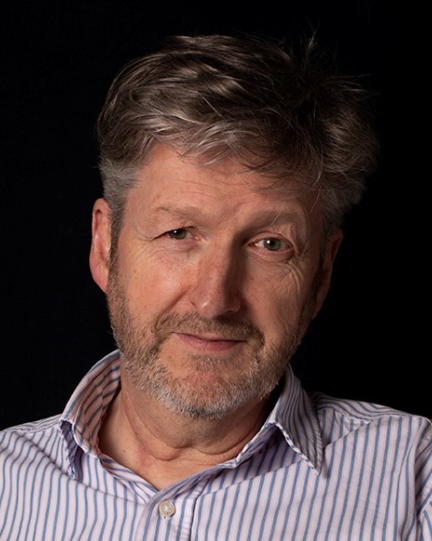
Over the course of the last 25 years, Darrell has helped deliver over $6B in new value to clients across the world and has served as the spark behind a dozen spin-out companies. He is the author of over 1000 innovation related papers and articles and a dozen TRIZ-related textbooks, the latest pair focusing on innovation in start-up enterprises and the soft-side of innovation. Over the years, he has held Visiting Professorships at a range of different universities around the world. He is currently a Professor at the University of Buckingham in the UK.
****************************
New TRIZ Business in Times of Global Crisis
Jerzy Michał Obojski, Maciej Młynarski, Len Kaplan
Abstract
During the emerging Global Depression, TRIZ consulting clients cut off the innovative activities as “non-essential costs.” TRIZ consulting has no chance to survive without income. What can we do?
There are three apparent decisions.
First, continue running TRIZ business “as usual,” pretending that Global Crisis does not exist. The majority of TRIZ consultants will opt for this apparent decision, although its window of opportunity is already closing. Working more comfortably, not harder, doing nothing new is good. But, when the crisis hits, they might lose their business wholly and unexpectedly.
Second, stop running TRIZ business due to Global Crisis, start doing something else, unrelated to TRIZ. However, burying the talent always comes with significant losses.
Third, find and develop the new application for TRIZ knowledge that would be in demand in times of Global Crisis. The total cost of development and marketing is high, but there is still enough time to invest the intellectual efforts and time in a real rescue of their business.
We suggest the unique business opportunity: help people to follow the efficient survival rules in times when life principles change erratically and unexpectedly. TRIZ principles can be developed into simple, practical advice, reference sheets, and checklists.
TRIZ services’ purpose is to help people, to improve their lives. Times of turmoil and uncertainty is the best opportunity to improve TRIZ. Let’s not waste it.
About the Authors:
Len Kaplan (USA)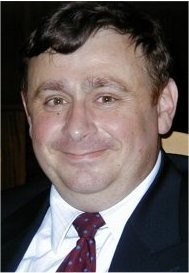
Len Kaplan was first trained in TRIZ in 1980. Since 1988, he was working as a professional TRIZ consultant. Since 1995, he worked as an innovation consultant, trainer, and facilitator in Ideation International Inc., Pretium Consulting LLC, and OutCompete LLC. From 2010 to 2016, Len has been working in South Korea for Samsung Mobile Display and Samsung/Hanwha TeckWin. Since 2016, I have been a freelancer and developer of TRIZ-based methods and practical applications.
Jerzy Michał Obojski (Poland)
 Mechanical engineer, author of numerous patents, co-author of the book "State-of-the-Art TRIZ,
Mechanical engineer, author of numerous patents, co-author of the book "State-of-the-Art TRIZ,
Theory of Inventive Problem Solving", holder of the Level 3 MATRIZ certificate. Trainer and consultant at the ODITK and Novismo Groups. Expert in Design to Value (DtV) and Design to Cost (DtC), propagator of TRIZ methodology, not only in Poland. From 2007, he was associated with the part of the ABB group that was acquired by Hitachi. There, he supports the practical implementation of TRIZ, DtV, and DtC in R&D departments in various countries. His career is associated with the development of new products and improvements to existing ones. Currently, it focuses on consulting and training as part of broadly understood added value and actively participates in defining business strategies for new products.
Maciej Mlynarski (Poland)
I have worked as a startup mentor, innovator, and data scientist.
After many years in the area of ICT technology application as a business consultant, a PM - project manager, or a program coordinator, I moved from the world of realization into the world of innovation and design. There, I was engaged in the innovation of business models, innovations of products and services, as well as product development and management. In his toolbox, there are Jobs-to-be-done in DS and TRIZ.
Parallelly, I moved from corporations and big firms into the world of SME and startups. I have participated in the launching of a couple of startups. Now I am supporting the European Institute of Technology as a startup mentor for the international Jumpstarter project.
Additionally, as a freelancer, I work in a Data Science environment using ML for Forecasting and Process Mining toolbox.
*********************************
Tasks priority management and decision-making
Anatoly Agulyansky, Alex Agulyansky
Abstract
Tasks prioritization is a crucial instrument for making your work more effective. If you want to achieve more with less, and if you're going to waste less time for output, instead of being outcome-oriented, task prioritization is mandatory.
There are plenty of tools that provide help with prioritization. Nevertheless, problem solving science is a relatively new paradigm; therefore, a lot of questions are remaining open and unclear.
What task is? How can we define the urgency and importance of the task? How do we make a choice between several similar options or items? How to choose one out of two options or items? All these questions are not trivial and demand analyses and understanding.
In this article, we are going to share some results of our investigations and findings in the field of task priority management.
About the Authors:
Dr. Anatoly Agulyansky is professional in processes design, yield improvement, and cost reduction. He is highly experienced in problem solving and innovations in chemistry, microelectronics, and material science. Anatoly has published about 100 scientific articles and a book on the chemistry of tantalum and niobium. Level 3 TRIZ specialist.
Currently, he holds the position of Sr. Staff Engineer at Intel Corporation.
Alex Agulyansky is a software architect and technology evangelist. He has strong expertise in the design of problem solving applications.
Anatoly and Alex created and continuously developing a SaaS product that is dedicated to innovations and problem solving and proposing an online platform for innovation project management (www.priz.guru).
The power of the platform is in the integration of project management and creative thinking tools, some of which originated from TRIZ.
**********************************
World Catalogs of TRIZ Sites and Around-TRIZ Sites Built by the Voluntary WTSP Project
Toru Nakagawa (Osaka Gakuin University, Japan) , This email address is being protected from spambots. You need JavaScript enabled to view it. (presenter)
Darrell Mann (Systematic Innovation Network, UK),
Michael Orloff (Academy of Instrumental Modern TRIZ, Germany),
Simon Dewulf (AULIVE, Australia)
Simon Litvin (GEN TRIZ, LLC., USA)
Valeri Souchkov (ICG Training & Consulting, Netherlands)
Abstract:
For information sharing and cooperation among TRIZ and related methodologies, we started a voluntary World TRIZ-related Sites Project (WTSP) in Dec. 2017. Instead of internet surveys which give us messy collections of Web pages, we aimed at building Catalogs of Web sites. Catalogs should collect and select good ones (after evaluation) and introduce them properly one by one. Web sites are suitable as units of the information source because their contents are actively updated at a certain quality and kept openly accessible.
We have developed the beta edition of the World WTSP Catalogs, having good structure and practical processes of building them. (A) World TRIZ Sites Catalogs currently have 23 ◎ (most important, about top 30) sites and 39 ○ (important, about top 100) sites. Their data come from contributions by 4 countries (missing 30-40 countries) and internet surveys in the USA and the world. (B) World Around-TRIZ Sites Catalogs have 33 ◎ sites, and 127 ○ sites. The data are obtained by intensive Internet surveys with keywords including Creative thinking, Creative problem solving, Innovation, Quality/value/cost/productivity, Patents, etc. About 1000 sites are visited one by one and graded and introduced briefly in 3-15 lines. Both Catalogs are structured with Index files and Site-description files, separated but linked with hyperlinks, for flexible and stable management. Catalogs for Print are also made in PDF files which contain the Index and the Site descriptions together. The PDF files may be downloaded without charge/registration (under the copyrights kept by WTSP) and printed and used on the user’s PC with active hyperlinks.
Voluntary cooperation by many TRIZ colleagues and contributions of Catalog manuscripts by site owners is indispensable for further enhancement of the Catalogs.
About the Authors:
Toru Nakagawa: Presenter
Dr. Toru Nakagawa is Professor Emeritus of Osaka Gakuin University (2012-) and Editor of “TRIZ Home Page in Japan” (1998- ). Since encountering TRIZ in 1997, I have been working for studying, applying, teaching, and promoting TRIZ in Japan and the world. My main interest is to establish a ‘General methodology of creative problem-solving’ (CrePS), on the basis, and as a further extension of TRIZ and USIT (‘Unified Structured Inventive Thinking’). The CrePS methodology should be applied effectively to technical and non-technical fields. For example, my recent paper (2018) is titled: ‘Liberty vs. Love’ and Ethics: Principal Contradiction of Human Culture and Solution Directions. “TRIZ Home Page in Japan” is a free and public web site for posting papers and articles by many authors, including myself, in Japan and the world. In Dec. 2017, I started the World TRIZ-related Sites Project (WTSP) and is serving as the Project Leader.
Darrell Mann 
Darrell Mann is the author of over 1000 innovation related papers and articles and a dozen TRIZ-related text-books.
Michael Orloff:
Prof. Dr. Michael Orloff is Founder, Director and Scientific Head of the Academy of Instrumental Modern TRIZ (from 2000), Berlin, Germany, main websites are www.mtriz.com and www.gramtriz.com. I got acquainted with TRIZ in 1963 through the first book by Genrikh Altshuller, and then we worked at the university (student, postgraduate student) with the methodological TRIZ-based instructions of the patent department. Then I applied TRIZ on my own, studying from books by Altshuller and other authors. Since 1995, I have been developing the Modern TRIZ educational direction, the main idea of which is to simplify the learning process and the initial use of TRIZ instruments by standardizing the basic procedures for modeling known solutions and creating new ones. Key models: extraction, reinventing, Meta-Algorithm of Invention (MAI) T-R-I-Z. I have published several books and developed educational e-programs of different levels. Springer's recent books: Modern TRIZ Modeling in Master Programs, 2020, and ABC-TRIZ, 2016.
 Simon Dewulf
Simon Dewulf
Dr. Simon S. Litvin, PhD, TRIZ Master, CEO/President, GEN TRIZ, LLC, USA, 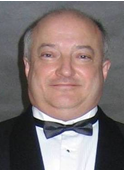
Dr. Simon Litvin is one of the world's foremost experts on innovation methodology, including TRIZ, Value Engineering, Six Sigma, etc. He has more than 40 years of experience developing, teaching, and implementing innovative methods. Dr. Litvin is one of the architects of advanced TRIZ methodology - GEN TRIZ. Dr. Litvin is one of the authors of modern Function Analysis, Trimming and Feature Transfer techniques, Cause-Effect Chain Analysis, Function-Oriented Search, and Main Parameters of Value Discovery.
Dr Litvin was a direct student and close associate of the originator of TRIZ, Mr. Genrikh Altshuller. Mr. Altshuller awarded Dr. Litvin with the title of TRIZ Master in 1998.
Dr. Litvin is the founder and CEO/President of GEN TRIZ, LLC the biggest TRIZ-based company in the world. Dr. Litvin led numerous international consulting projects for Fortune 500 companies such as Alcoa, British American Tobacco, Clorox, Colgate-Palmolive, General Electric, Intel, Kimberly-Clark, Mars, Novartis, Pepsi, Owens-Illinois, P&G, Siemens, Tyco, and Unilever.
Dr. Litvin has over 110 publications to his credit, including 7 books and more than 30 patents. Dr. Litvin is a member of R&D Council of International TRIZ Association (MATRIZ) and Chairman of TRIZ Master Certification Board. He is also a member of Altshuller Institute for TRIZ Studies and European TRIZ Association (ETRIA).
 Valeri Souchkov:
Valeri Souchkov:
****************************
How We Used TRIZ Principles to Deal with COVID19
Jack Hipple
As a result of the corona virus outbreak, the business world has been turned upside down. The usual interfacing with customers and suppliers has been disrupted to minimize transmission of a highly contagious disease, whose transmission is via mechanisms not seen before in this magnitude. The restrictions on many normal business behaviors such as travel, dining, and face-to-face communication have caused businesses and individuals to attempt to accomplish the same objectives without the traditional resources normally used. In other words, we have had to derive and implement solutions that look suspiciously like the TRIZ concept of the Ideal Final Result with the use of new or undiscovered resources
A simple example of this is the use of web-based platforms (ZOOM would be one example), previously used primarily for social interactions between physically separated family members, to conduct client meetings as well as internal staff meetings. Since group dining was also greatly restricted, the “Do It in Reverse” principle has been implemented by thousands of food service and other businesses to deliver goods and services.
This presentation will overview the use of TRIZ principles in response to this crisis and discuss their future use independent of the final outcome of the search for a cure to this virus.
About the Author: 
Jack Hipple is Principal with TRIZ and Engineering Training Services in Tampa, Florida. He is a chemical engineering graduate of Carnegie Mellon University and spent 26 years with Dow Chemical, serving as Director of Corporate Chemical Engineering R&D and Discovery Research Director.
Following his career at Dow, he joined the National Center for Manufacturing Sciences as Global Technology Sourcing Manager, and then named Ansell Edmont’s Research Manager for Protective Products, and finally project manager for Cabot’s aerogel process development program.
He was the first TRIZ trainer for BP/Amoco and then formed TRIZ and Engineering Training Services in 2001, assuming responsibility for AIChE’s Introduction to Chemical Engineering training and ASME’s public TRIZ classes. He has served as chair of AIChE’s Management Division and was elected to the AIChE national Board of Directors in 2011 and a Fellow of AIChE in 2013. His clients have included Siemens, S.C. Johnson, US Central Command, Honeywell, the US Navy, LSU, Little Caesar’s Pizza, Mosebach Resistors, Owens Corning, and Schneider Electric.
He is the author of Chemical Engineering for Non-Chemical Engineers (Wiley, 2018) and The Ideal Final Result: What It Is and How to Achieve It (Springer, 2012). He is the online TRIZ instructor for Kent State and the latter book is used in this course.
He has published innovation and TRIZ articles for Chemical Engineering Progress, Creativity and Innovation Management, and Leaders in Action. He has given numerous public workshops and presentations for AIChE, ASME, ASQ, PDMA, and the American Creativity Association.
****************************
Functional Analysis - The Value Engineering Way
David Drummonds
Did you know that Functional Analysis came to TRIZ from the Society of American Value Engineers [SAVE]. It was created by Lawrence Miles. The "Save" approach differs from that of TRIZ as you might expect. The purpose of this paper is to explain the SAVE approach and differences to and commonalities with the TRIZ approach.
About the Author: 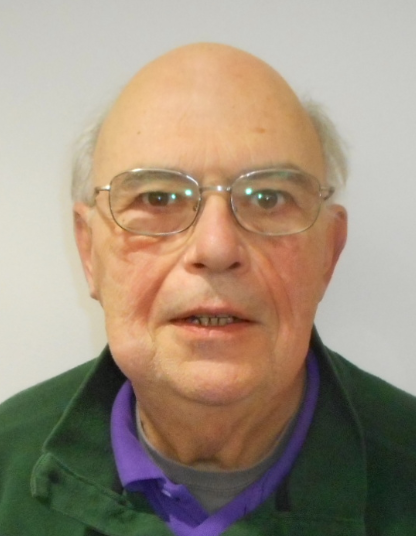
David Drummonds is a practicing engineer primarily in the field of power generation with over 50 years of experience. He holds a PhD in Engineering Management and has certifications in TRIZ, project management, risk management, six sigma, and lean.
****************************
Generative Inventions. Main Sources of Novelty
Dr. Val Tsourikov, Founder of True Machina project
The automatic generation of new inventions requires rich sources of novelty. Where does novelty come from? - This is an essential question. We identify the following sources of a novelty for generative inventions approach: scientific discoveries, prediction of human needs, mega-trends, system engineering, combinatorial synergy.
Scientific discoveries, new materials, novel algorithms help generate new inventions by analogy on the functional level. Human needs prediction can be made by linking fundamental needs with new technologies. Mega-trend has a core innovation, which can be applied to many domains, thus generating inventions automatically. System engineering, in the form of technological shells, is a platform for automatic inventions in any domain. Combinatorial synergy may become a leading source of novelty but requires a very intelligent human-computer interface.
About the Author: 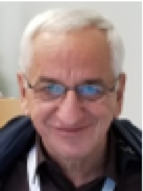
During my entire professional career, Dr. Val Tsourikov has been focusing on automation of creativity by developing unique A.I. engines and knowledge bases for different domains. As a post-doc visitor, Val studied advanced A.I. methods at the Imperial College of Science and Technology in London. Dr. Tsourikov founded A.I. Laboratory at Minsk University of Informatics in 1987. In his Ph.D. thesis, Val proposed novel A.I. system Pulsar, which was able to generate novel ideas in technical areas.
In 1992 Val founded Invention Machine Corporation (IMC) in Boston, where he served as the CEO/CTO till 2001. Under Val’ leadership, the company raised four rounds of Investment from Citigroup, Intel Capital, Motorola, RRE Ventures, Dassault Systemes. In 1998 Fortune Magazine named Val Hero of U.S. manufacturing (FORTUNE Magazine, May 25, 1998).
****************************
Once the pandemic is history, participants will be encouraged to take on the UN Sustainable Development Goals (such as hunger, poverty, education, healthcare, equality, climate and the other important issues facing our planet). The author believes that enhanced I-TRIZ will be an effective path toward making significant progress on these lofty goals by 2030.
About the Author: 
He is the author of four books on strategic thinking, innovation, design, and quality.
****************************
ISO Standards for Innovation and their Impacts on the TRIZ Community
Jim Belfiore
In July of 2019, the first of multiple ISO guidance standards for innovation was released. ISO 56002 offers guidance to product and process organizations for providing continuous improvement of innovation management systems and establishes a common language for innovation practices. Additional ISO innovation standards are in different stages of development and review, including standards for intellectual property management, strategic intelligence management, and idea management. The release of ISO 56002 is raising questions from industry leaders and startups alike as to how the standard can be adopted, not only to shape their innovation management systems, but also combine the guidelines with other management system standards such as quality management (ISO 9001), environmental management (ISO 14001), and asset management (ISO 55001). The emergence of ISO's innovation standards presents a unique opportunity for the TRIZ community to provide focused insight and guidance over the next few years, which could spark a renaissance in the awareness, enablement, and adoption of TRIZ methods across many industries.
About the Author:
Jim Belfiore is the CEO and founder of Sensorinus, a bespoke consulting firm that helps its clients remove barriers to innovation. Prior to founding Sensorinus, Jim was managing director of client innovation services at IHS Markit, via its acquisition of Invention Machine Corporation. For over sixteen years at Invention Machine and IHS Markit, Jim led and grew global innovation consulting teams and developed best practices that helped clients solve critical engineering problems, unlock business value, and realize game-changing growth. Jim's client innovation and strategic consulting experience span over 100 Fortune 500 firms around the world. His first online course, "Managing Innovation" premiered in July of 2020 on LinkedIn Learning to critical acclaim, and has been viewed by thousands of innovation practitioners around the world.
****************************
Inventing Complex, Intelligent, Strategic Systems (CISS) - ALVIS-SCAN thinking for the Sixth Wave of Innovation
Navneet Bhushan
We define a new class of systems and products named Complex Intelligent Strategic Systems (CISS). We propose that these systems are emerging in the Sixth Wave of Innovation (years 2015-2045). We evolve the formal definition of a system described in TRIZ and in Hubka’s Theory of Technical Systems, to include technical systems with a “mind” of their own. This also maps to the 10th Law of TRIZ proposed in 2012 – the Law of Increasing Intelligence of Technical Systems. The challenges of discovering, defining, describing, designing, developing, deploying, and deducing (7Ds) the CISS require a complete relook of their lifecycle. Besides the advent of cyber-physical systems, increasing intelligence of technical systems, the massive scale of these systems coupled with strategic nature of many of these systems leads to unprecedented challenges.
These systems are characterized by substantial decentralization, higher embedded/ambient algorithmic intelligence, inherently conflicting, unknowable and diverse needs/requirements, continuous evolution/deployment/learning, heterogeneous, inconsistent, and changing elements, erosion of people/system boundary, regular failures and new paradigms regeneration of parts of the system. Key aspects for 7Ds of CISS lifecycle i.e., Value, Inventiveness, Human Interaction, Computational Emergence, multi-level Design, Computational Engineering, Adaptive System Infrastructure, Adaptable and Predictable System Quality, Policy, Acquisition and Management are explained. Nine thinking dimensions proposed for CISS are Analytical, Logical, Value, Inventive, and Systems thinking (ALVIS) and Scale, Computational, Algorithmic and Network (SCAN) thinking. These thinking dimensions need to play a much larger part in an integrated manner than the current mostly analytical, logical and analogical thinking. We describe few case studies in ALVIS-SCAN thinking and describe ALVIS-SCAN thinking framework for 7Ds of CISS.
About the Author:
Navneet Bhushan founded CRAFITTI (www.crafitti.com) – an Innovation Research and Consulting firm at Bangalore, India. His earlier positions include Scientist, Technology Specialist, Vice-President (Innovation) in a career spanning more than 30 years. The principal author of 2004 book Strategic Decision Making, Springer- UK ,currently he is writing “Choice Crafting – Innovation and Decisions for a Complex World”.He blogs at innovationcrafting.blogspot.in and can be contacted at This email address is being protected from spambots. You need JavaScript enabled to view it..
Over a career spanning more than 3 decades, Navneet held positions such as Vice-President and Head (Innovation) with Hexaware Technologies, Principal Consultant with Wipro Technologies, CEO of CREAX Information Technologies Pvt Ltd., Technology Specialist at Philips Global Intellectual Property & Standards (IP&S) division, and Senior Research Associate with Infosys Technologies. Before joining the corporate world Navneet worked as a Scientist at Defence Research & Development Organization (DRDO) for more than a decade.
Navneet has authored more than 65 technical research papers and articles in various International and National Journals, Trade Magazines and Conferences. He has been an invited speaker in core technology forums, conferences and seminars and has been a regular contributor in national and international media on technology and business.
****************************
TRIZustainability – TRIZ for Sustainability
Sandeep H Wankhade
Sustainability is on the card now. Willing or not, all organizations are bound to stride in the fulfillment of the Sustainable Development Goals (SDG). The good news is that the intent to execute sustainability objectives is evident. However, many companies struggle to bridge the gap between commitment and actual implementation. The complex sustainability issues that businesses are dealing with can be daunting challenges. Many organizations are struggling to achieve sustainability-focused innovation.
John Elkington has coined the concept of Triple Bottom line, though it consists of only 3 words – People, Planet, and Profit; but it encompasses all walks of life and impact on past, present and future. There are several drives and approaches to meet the SDGs, but one thing is paramount that innovation is the key for attaining it.
TRIZ is the methodology with rich set of tools which can deal with the contradiction of pros and cons of the Sustainability development. Rather it can make it win-win situation for all by eliminating harm or converting harm to benefits. This paper will substantiate it with relevant case studies.
About the Author:
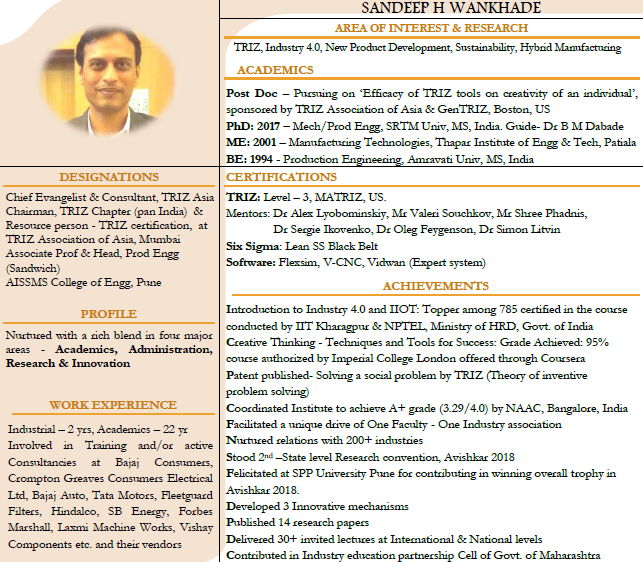
****************************
